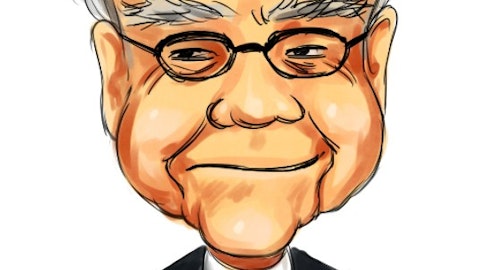Chipmaker Advanced Micro Devices Inc (NYSE:AMD) had more bad news for investors this month as the company revised its sales estimates for the third quarter of the year. AMD’s management now believes that sales were down 10% from the second quarter of 2012, when previously they had expected a decrease in the range of 1%. Considering that Q2 2012 revenues were down 10% from Q2 2011, the company is saying that the decline of its business has been getting sharper rather than moderating. The stock price fell over 10% on the day of the announcement, so it is down by about half year to date. We can see a number of factors behind the fall in sales: lower PC demand as consumers increasingly shift to tablets, increasing difficulty keeping up with Intel Corporation (NASDAQ:INTC) in the chip market, and a temporary hit to PC sales as consumers wait for a new version of Windows.
When revenue declined 10% in Advanced Micro Devices, Inc.’s last quarterly report compared to a year earlier, earnings fell 39% in response (from $61 million to $39 million, with earnings per share falling from 8 cents to 5 cents). Applying that same relationship to the q/q decline the company is announcing, earnings for the third quarter would have come in at $24 million, and quarterly EPS would be 3 cents. That compares poorly with the 15 cents per share it earned in the third quarter of last year; in addition, annualizing a 3 cent per share quarter generates a P/E of 24 after the stock’s decline today to a market cap of $2 billion. Analyst estimates, pre-announcement, imply a forward P/E of 9.
Hedge funds generally didn’t have very large positions in Advanced Micro Devices, Inc. at the end of June. D.E. Shaw, a large hedge fund named after its billionaire founder, had increased the size of its position during the second quarter to 5.1 million shares but this was in fact a small amount of exposure for the fund (see where D.E. Shaw had more of its funds invested in). The largest position recorded in our database of 13F filings belonged to Kerr Nielson’s Platinum Asset Management. Platinum had owned 22 million shares of AMD but it had cut its stake by 5% over the course of the quarter; it is possible that the fund sold more shares at considerably higher prices than where the stock is currently trading. Research more buying and selling activity from Platinum Asset Management.
We’ve mentioned Intel Corporation (NASDAQ:INTC) as AMD’s leading competitor, though the tech giant is in many other markets as well. Intel- whose market capitalization is just over $100 billion- trades at 9 times trailing earnings and 10 times forward earnings estimates. Obviously there is an expectation here that Intel’s business is in decline as well, even if it is not as sharp as AMD’s; certainly a weakening PC market would hit the larger company as well. However, INTC’s revenue and earnings in the second quarter of 2012 were both within 5% of the same figures for Q2 2011, and there is a 4.1% dividend yield to boot, which should give investors a little more confidence. Read further analysis of Intel.
AMD can also be compared to additional tech giant International Business Machines Corp. (NYSE:IBM) as well as to component manufacturers NVIDIA Corporation (NASDAQ:NVDA) and Micron Technology, Inc. (NASDAQ:MU). IBM’s business has also been about flat compared to a year ago, and we think that its valuation multiples (trailing and forward P/Es of 15 and 12, respectively) are roughly accurate in reflecting a stable business with a modest 1.7% dividend yield. Nvidia and Micron have forward P/Es of 12 and 9, which are premiums to where AMD trades even though these companies are likely in about as big trouble. Their reports for the second quarter show that Nvidia’s revenues were narrowly up versus a year earlier, earnings were down 22%; Micron’s revenues fell 8% and the company is actually unprofitable on a trailing basis. We don’t think that these two peers are much more attractive than AMD.
AMD’s most recent reports seem to demonstrate that the combination of industry dynamics and competition from Intel- we’re not yet sure which is playing the bigger role- is having a severe effect on its business. We would stay out of the stock, but if Intel can remain stable it might actually be a good value. A long position in Intel Corporation (NASDAQ:INTC) and a short position in Advanced Micro Devices Inc (NYSE:AMD) might be the best way to play these stocks.





